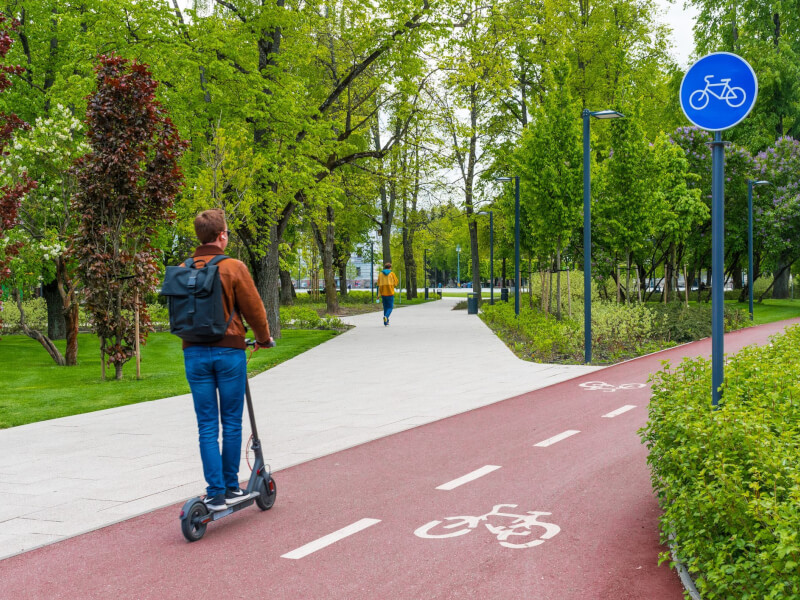31 May 2023 – Fifty years have passed since The Club of Rome published The Limits to Growth. The report was a sharp critique of the notion of material growth as eternal and predicted increasing problems as a consequence of rapidly growing populations and economies. The report warned the world economy would face the risk of serious problems — even collapse — within 50 to 100 years because of resource depletion, increasing volumes of waste and pollution, and the degradation of vital ecosystems.
This scenario is becoming reality. Only since 1970, global resource use has more than tripled. Today, the world economy consumes 100 billion tons of virgin materials every year. The benefits of this material use are obvious. The living standards of billions of people have vastly improved. Its downsides of pollution, resource depletion, climate change and biodiversity loss, however, also becoming evident.
Earth for All: A Survival Guide for Humanity, published in 2022, is a follow-up to The Limits to Growth. The book explores different scenarios to effectively address the resource, pollution and ecosystem crises, as well as the problems of poverty and inequality. It identifies five “extraordinary turnarounds” that can transform our economies to meet the 2030 Sustainable Development Goals and offer wellbeing to the vast majority of the world population within the planetary boundaries.
These turnarounds focus on: addressing poverty forcefully by debt relief and by adopting fairer and greener economic models; reducing inequality; transforming energy systems to halve greenhouse gas emissions every decade; making food systems nature positive by 2030; and by empowering women by giving priority to education and reproductive health.
These turnarounds must be underpinned by a number of flanking measures, in particular a radically different approach to managing natural resources.
The extraction and processing of materials is a major reason behind the triple planetary crisis of climate change, biodiversity loss, and pollution and waste, responsible for an estimated 50 per cent of carbon emissions and 90 per cent of global biodiversity loss.
Ever since the Brundtland report in 1987 we have talked about “decoupling resource use from economic growth.” But so far it is not happening. Global resource use productivity has not improved since 2000, and material footprints remain extremely uneven with high-income countries consuming over 10 times more of the Earth’s resources per capita than the low-income countries. To move away from this system, while assuring the wellbeing of 9 to 10 billion people without destroying the planet, overall resource use must level off. At the same time, however, energy and material use in low-income countries will have to increase significantly to allow people in these nations to attain a decent standard of living.
Resource efficiency is part of the answer – in terms of extended product life, reuse and recycling — but it is no panacea. Efficiency gains are frequently cancelled out by increases in consumption as a consequence of economic growth and rebound effects. Hence, it is unrealistic to assume that technology fixes alone will lead to the decoupling of production and consumption from environmental harms at the scale needed. Instead holistic, systemic change is needed with the long-term goal of creating a global economy with sufficiency at its core. Human needs can be met much more intelligently than what is the case today.
Such an approach means not only focusing on decarbonising energy production, but also changing the drivers that lead to excessive energy and material demand.
To better understand what this would look like in practice, let’s take mobility in cities as an example. Instead of focusing blindly on replacing the internal combustion engine with electric vehicles (EVs), mobility needs examining more broadly. Cleaner vehicles are part of the solution, but equally important are compact cities offering the services people need close to where they live; safe cycling and walking options; frequent and reliable public transport; and pooled mobility. Mobility as a service stands out as a most appropriate solution, notably in cities. Likewise, EVs should be made in the most circular way possible to minimise resource use.
Such systemic optimisation would save significant amounts of steel and other materials, large amounts of energy and reduce air pollution.
A similar logic can be applied to other sectors and, if rolled out globally, would help create fairer economies and societies, and help tackle the root causes of climate change and biodiversity loss. To this end, the twenty-first century should be marked by the dual trends of decarbonisation and dematerialisation, and all activities should be judged according to their contribution to meeting these goals.
Policy makers and business leaders are deluded if they believe that by solely greening existing systems and structures of production, change can be delivered at the speed and scale demanded by science to cut greenhouse gas emissions and stop the sixth great extinction. It is time for systemic change that delivers for people and the planet everywhere, not just for the wealthiest in high-income countries.






